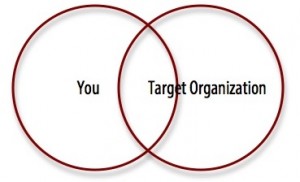By Caroline M. Cole
In the coming months, organizations may see an uptick in the number of employees stepping up their game; adopting their best behaviors; and working to make the strongest impression on supervisors, coworkers, subordinates, and clients—sure signs that review cycles are upon us again. Whether they’re called performance evaluations, merit reviews, employee appraisals, or something else, these assessments, in their ideal form, offer employees matter-of-fact feedback on their performance and productivity, validating efforts and, as necessary, refocusing or redirecting others. In the process, performance reviews encourage transparency of expectation, help organizations identify where and how team members could be put to greatest use, and enhance channels of communication between and among various divisions and their participants. These ideals, however, are seldom realized in most review systems.
Performance reviews have increasingly become a nerve-wracking gauntlet in which people are mercilessly scrutinized, sorted, and ranked in an effort to determine who gets what recognition, project assignments, salaries, bonuses, promotions, or even continued employment. Unfortunately, such zero-sum evaluation models encourage people at all levels to game the system, rather than use it to accurately assess, critique, and promote contributions that can serve individual employees and the larger organization.
Consider, for example, competing objectives between employees and management, which alone are enough to undermine most review systems. Whereas employees seek more promotions, better opportunities, higher salaries, and bigger bonuses, management works to keep costs as low as possible, often creating “Us” and “Them” factions that can encourage both sides to skew evaluations in ways that serve their respective interests. Yet while “us–them” divisions may be most obvious between different levels, they can likewise emerge within a single tier of an organization’s hierarchy. For example, there are team members and other allies—supposedly competing against those in other divisions or offices for limited resources—who will give one another more favorable reviews than may be warranted as part of an unspoken quid pro quo agreement; these same individuals may likewise give people beyond their immediate cohort (their alleged competitors) unfavorable or simply lukewarm evaluations, directly or indirectly sabotaging others within the same company. Whatever the reason, the result is the same: scores of evaluations that leave organizations unsure of an employee’s actual contributions, larger divisions and teams dismayed by the efforts that are and are not recognized, and individual employees less certain of where or how to apply their talents for greatest impact.
Performance reviews should and can be more than what many people experience. Therefore, whether we are evaluating subordinates, peers, or even those overseeing our work, the strategies below can help us write evaluations that serve employees and organizations alike.
• Focus on performance, not (just) personality. Evaluations are easier when considering quantifiable targets and objectives, such as percentages, dollar amounts, quantities, and other figures that reveal the extent to which someone has met particular benchmarks; for instance, if the goal was to raise $500,000 in revenue, evaluations can matter-of-factly recognize employees who do, in fact, raise $500,000, praise those who exceed $500,000, and call out those who raise less than $500,000.
Harder to evaluate are the soft skills, which are often tied to an individual’s character and personality, such as work ethics, attitude, flexibility, adaptability, communication skills, time management, and social grace. These and other subjective elements inevitably emerge in performance reviews, because they can be instrumental in helping employees meet quantifiable targets and objectives; they are likewise valuable for encouraging office congeniality and, by extension, for enhancing company culture. Problems arise, however, when performance reviews adopt a bottom-up approach, which can promote overly subjective, biased evaluations, regardless of any measureable evidence to the contrary.
Starting with the reviewer’s thoughts about the person being assessed, bottom-up evaluations tend to be (more) glowing when reviewers like the individual and less favorable, or even damning, when reviewers do not care for the person under review. As such, bottom-up evaluations can be misleading. After all, people may be kind, generous, and pleasant, but ineffective in the work they do. Similarly, those who seem aloof, curt, or otherwise rough around the edges may be able to accomplish all they are required to do, and more, with the highest quality. Again, personality and other subjective traits may figure into the employee’s overall performance, but grounding evaluations primarily or even solely in an employee’s personality can inadvertently reward well-liked, but low performing individuals and punish high performers who may not be as popular.
Evaluations will always contain subjective observations, but if we are to provide information that can help individual employees, managers, and the larger organization make decisions about how to achieve various goals in the most efficient, company-approved manner, we must be as attentive to people’s performance as we are to their likability. Starting with a job description can help us generate top-down evaluations that move us in that direction.
• Start with the job description. Top-down evaluations assess employees against pre-determined goals and directives, explicitly correlating what employees have done (or have not done) against those demands. A job description is often the starting point for identifying these objectives but, depending on the context, earlier reviews and conversations, as well as the person’s individual goals might help narrow or otherwise shape the expectations guiding a particular review. Therefore, in writing evaluations, we must first understand the individual’s job and the ways in which it contributes to larger organizational goals.
For instance, what are the person’s day-to-day obligations, as well as that person’s responsibilities on particular projects and assignments? What are the performance standards for such efforts; in other words what signs or benchmarks would indicate that someone has done all that which was required or expected? And finally, how, why, and to what extent do these efforts contribute to helping others meet individual and collective targets?
By understanding what people are being asked to do and why, we can better report where and how people are meeting various expectations. Along the way, we might also recognize where job descriptions are obsolete or otherwise in need of revision, minimizing the likelihood that we inadvertently penalize the individual for not addressing or participating in outdated tasks.
• Include the evaluative element. Gathering information on what a person was supposed to do and what the person actually did is the starting point for most performance reviews, but evaluations must do more than simply list job responsibilities and employee actions; they must assess the value of those actions and efforts as the particular employee has done them. In other words, the evaluation should explain the extent to which the employee’s completion or non-completion of those responsibilities has contributed to meeting, exceeding, or failing to accomplish larger goals. And herein lies one of the greatest challenges for writing evaluations: recognizing that participation in and of itself is not an indication of (useful) contribution.
Woody Allen said that “80% of success is showing up.” Clearly success requires that we show up, but we must also realize that simply showing up or even participating does not ensure success when and as needed. The time we spend on a task, for example, may not always produce the results we seek; the work we do may not always move projects forward; the leading, facilitating, reprimanding, cheerleading, and so on we offer may not always be what’s necessary at a given time; and, on occasion, we may not reach our goals, despite our best efforts. Unfortunately, performance reviews evaluate performance, not potential. Therefore, evaluations must identify the ways in which the person being reviewed has moved the team, division, and larger organization forward in reaching their individual and collective goals, as well as the ways that person (directly or indirectly) has hindered or delayed those efforts, given all of the variables in play. To address these elements, we might consider answers to the following questions about the person we are evaluating:
What, in general, did the person need to do, for whom, according to what criteria, for what aims, and by what deadline(s)?
* * *
Were there any extenuating circumstances that would have affected which expectations the person could meet, or how?
* * *
In spite of, or because of, any extenuating circumstances, did the person do all that was required, as expected?
* * *
On a scale of 1 to 5, where 1 equals “not at all,” and 5 equals “to an exceptional degree,” how would each of the person’s contributions rank in terms of being sufficient, effective, appropriate, efficient, professional, timely, thoughtful, quality driven, and so on?
* * *
What was impact of the person’s individual and collective efforts on the team’s, division’s, and larger organization’s short- and long-term goals?
Depending on who is being evaluated and in what context, these questions may overlap, offering different ways to understand the value of the individual’s contributions. And while answers to these questions may not, in themselves, appear in a review, they can shape the types of comments we make and the details we emphasize or subordinate in our assessment.
• Resist hyperbole and other flashy language. In an attempt to praise (or condemn) people in an evaluation, reviewers often turn to adjectives, believing that modifiers inherently reflect value. An understandable position, especially considering that an often-consulted resource for writing evaluations is James E. Neal Jr.’s Effective Phrases for Performance Evaluations.
Grouping “effective phrases” into categories describing a person’s accuracy, computer skills, cooperation, innovation, management abilities, and so on, Neal offers hundreds of options for describing the ways people perform. And for those who may want to add a stylistic flair to their descriptions, Neal adds a list of “helpful adjectives” that reviewers can sprinkle throughout their evaluations, expressing their enthusiasm for individuals who may be curious, energetic, observant, resourceful, keen, enthusiastic, and so forth, resulting in statements like:
sustains a high achievement level,
is an abundant producer,
very reliable in meeting expectations,
displays strong competency,
is very talented in gaining the support of others,
shows highly effective computation skills,
is very knowledgeable over a wide range of responsibilities,
demonstrates effective delegation techniques,
makes reasonable decisions, and
capably handles potentially volatile situations
Performance reviews that include such phrases may sound supportive, yet the fact that these and comparable phrases draw upon relative terms means that the value of an employee’s contribution is up for interpretation. Regrettably, in contexts with competing agendas, fluid interpretations in performance reviews can be problematic for employees and companies alike.
Relative terms are words—typically adjectives, but also concepts—that assume identical points of reference for defining, gauging, and understanding value. In performance reviews, relative terms would be phrases and words like far-reaching, high-achieving, action-oriented, solid, fresh, enthusiastic, innovative, abundant, reliable, and strong. Yet, while people who write performance evaluations know what they mean when they use these words, and while people who read performance reviews know what they mean when they see these words, it’s unclear, and unlikely, that those writing and reading evaluations mean exactly the same thing. Unfortunately, when people do not share identical points of reference, relative terms become “relative” to each participant’s individual point of reference.
Consider a gruff officemate that a supervisor describes as “customer-oriented,” or a manager that barks orders being described as “pro-active” or “assertive,” or those who don’t solicit others’ feedback being called “independent.” These different interpretations and, by extension, different understandings of terms and phrases inevitably result in miscommunication. Therefore, if we are to fairly and accurately convey the impact of what someone’s work does or offers, we must move away from modifiers and, instead, offer indisputable facts. In other words, we need to identify and replace the relative terms that conventionally overwhelm performance reviews with details that others can understand—regardless of their context, background, and biases.
To demonstrate, take the phrase “…promotes a creative environment.” In this example, the adjective “creative” is the relative term, for what “creative” means depends on a person’s experiences and frames of reference for creativity. Those working for a graphic design studio, for instance, will define “creative” differently than those working in software development, school administration, and financial services. There may also be concerns about what it means to “promote” such environments. For some, it may be initiating and financially sustaining particular programs, services, activities, and endeavors; for others, it can mean not directly hindering things from occurring.
If we are to help others understand exactly what we mean by “creative,” or any other adjective we might be tempted to include in a review, we must provide tangible, uncontested details that others can recognize and interpret in the absence of first-hand observation. In other words, we must show, not tell.
One strategy for moving beyond relative terms is using the “X was so Y” trope comedians would use to encourage audiences to respond, “How Y is/was it?” In the case of our example, “…promotes a creative environment” would prompt the response, “How creative is/was it?” Comedians might offer a punch line, but performance reviews would offer details to answer the audience’s question. For example:
“…sponsors weekly brainstorming sessions to help team members discuss strategies for resolving individual and collective concerns.”
“…at every stage of development, randomly draws the names of 3–5 employees from every division of the company—regardless of the division’s or employee’s connection to the immediate project—to solicit feedback on how to refine the product before sending it into production.”
Such information needs no additional commentary or qualifiers to help readers interpret what we mean (e.g., “She’s really creative—she sponsors weekly brainstorming sessions to help team members discuss strategies for resolving individual and collective concerns”). The details we offer should speak for themselves, allowing readers to understand the person’s contribution as creative, responsive, supportive, encouraging, or any other adjective they might provide on their own, based on both the details we offer, and those we don’t.
Given the problems of relativity, we can understand the concerns conventional performance reviews generate with comments like:
Elizabeth is highly motivated, friendly and personable.
Response cards continue to suggest that Philip has inadequate customer service skills.
Xi uses his diverse experience in customer service and extensive leadership experience to make valuable contributions to the company.
We have received regular complaints that Lisa is not offering her team members sufficient guidance or encouragement.
Sheryl is a fast learner, able to master complex details quickly with minimal supervision.
Bryant uses his exceptional experience in sales to move products.
Running through the “X was so Y” trope, or the reporter’s “Five Ws” and the questions “How?” and “So What?,” we can see potential discrepancies. “Highly motivated” according to what standards? “Friendly” by whose definition? “Inadequate” in what ways? “Personable” in what forum? What constitutes “diverse experience” or “extensive leadership”? What time frames are assumed by “regular” and how much is “sufficient”? What do “complex details” represent, and how “quickly” were they learned? What type of supervision is conventional in comparable contexts, thereby allowing someone to suggest an “insufficient” amount has been offered?
Such questions, left unanswered, make it harder for those reading evaluations to gauge not only what the employee has done, but what that individual may be able to do going forward. In contrast, by linking employee contributions to job responsibilities; by replacing relative terms with quantifiable or observable details that indicate how, why, to what extent the employee has met, exceeded, or failed to reach particular targets; and by explaining how the employee’s actions and behaviors have served or hindered larger goals, we can help employees and companies make better decisions moving forward. Consider, for example, the following performance review excerpts:
In March 2019, Tricia was assigned to the Inkwell account to review the proposed budget and identify ways the team might be able to cut production costs by 3–5%. In the months that followed, she organized one-on-one and team meetings with the eight developers stationed in offices throughout California to understand each stage of development and the resources developers needed individually and collectively at each stage. Based on these discussions, she then arranged for developers to meet face-to-face two days each month to work on project segments. By streamlining communication an resources between and among the developers, the larger team was able to catch and address programming problems at earlier stages than would have been possible otherwise, shaving two months off the original production time and saving 7.5% in overall project costs.
* * *
Zachary remains one of three editors for the firm’s website, focusing primarily on the financial segments, yet contributing to the tech discussions as necessary. In June, he proposed writing a weekly personal finance blog, and his blog launched the first week in August. The site continues to gain 3–4% new subscribers each month overall but, since Zachary began blogging, an additional 1500–2000 people (or 1.6% of total subscribers) have subscribed to the site through the link on his blog page; of these new subscribers, 21% have purchased products from the site, generating over $180,000 in sales within six months.
* * *
Although Janice was to take an increasingly active role in pitching products to potential VCs firms, the market has been uncharacteristically sluggish during Q1 and Q2, minimizing funding opportunities throughout the industry. Thus Janice turned her attention to researching current and potential VCs and developed one-page company profiles for 93 organizations that might be interested in providing seed funding for projects in development or otherwise underwriting products we have discussed bringing to new markets. In the meantime, developers have been using Janice’s company profiles to identify VC-valued features they could incorporate into products, thereby appealing to broader audiences.
* * *
Each day, Blake uploads sales, expense, and new business data for the 15 Image Collection Packages sold exclusively online; he then uses that data to track and analyze product line sales and costs to generate sales forecast reports that the marketing team uses to develop advertising objective, strategies, plans. Although Blake meets weekly deadlines with these reports, he does not always maintain the database of competitive products (which entails researching competitive products, evaluating product characteristics, tracking market share, pricing, and advertising), limiting the information the marketing team has to create product campaigns.
Depending on the context, such descriptions can present employees as innovative, collaborative, resourceful, supportive, encouraging, adept at solving problems, resourceful, productive, adaptable, sufficient, capable, average, low-performing, and so on—all without using adjectives that someone else might interpret differently. But more importantly, they help employees and larger organizations identify specific actions and behaviors that are moving projects forward as expected, or better-than expected, as well as area that may need attention.
* * *
Review cycles are seldom popular because egos are fragile, expectations can be unclear, and stakes remain high, prompting individuals on both sides of the evaluation to distrust the process at-large. Yet while performance reviews may never become a welcome enterprise, they should—at the very least—become fairer, more transparent, and more constructive assessment tools. In doing so, they can help employees and organizations identify ways to move forward in ways that enhance individual and collective performance.
Working toward Areté…
In the space below, share your experiences and observations about reviews—both those you have written and those you have read—and the elements that have helped you and others make critical decisions.










